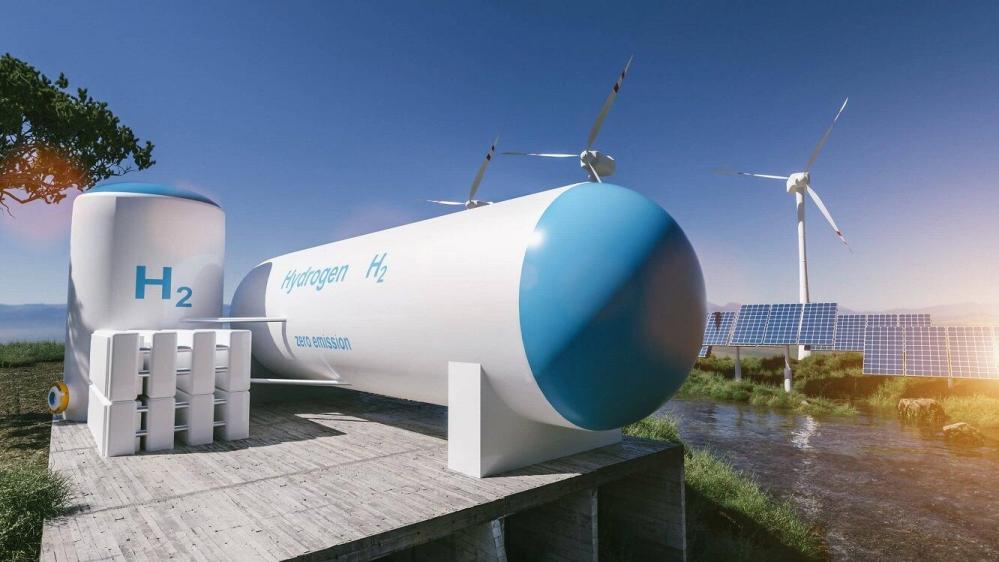According to the “Interim ISTS Rolling Plan 2029-30,” newly released by Central Transmission Utility of India Ltd (CTUIL), interstate transmission system (ISTS) network for feeding 19,500 MW renewable energy to upcoming green hydrogen plants is expected by FY30.
This connectivity of 19,500 MW is expected to come up entirely in FY28 and will serve upcoming green hydrogen and green ammonia manufacturing plants in Gujarat, Tamil Nadu and Andhra Pradesh.
While Gujarat will get the highest ISTS drawl for 13,500 MW, Andhra Pradesh and Tamil Nadu will benefit from one 3,000-MW scheme each.
According to information available with T&D India, the National Committee on Transmission (NCT), in its recent meetings, has approved three out of these five ISTS schemes with an aggregate estimated cost of around Rs.8,200 crore for feeding renewable energy to upcoming green hydrogen/ammonia manufacturing plants in Gujarat and Tamil Nadu.
The three schemes are termed as:
- Transmission system for supply of power to green hydrogen/ammonia manufacturing potential in Kandla area of Gujarat (Phase-I: 3 GW)
- Transmission system for supply of power to green hydrogen/ammonia manufacturing potential in Mundra area of Gujarat under Phase-I: Part B1 scheme (3 GW at Navinal substation)
- Transmission system for proposed green hydrogen/green ammonia projects in Tuticorin area (3 GW)
These three ISTS schemes where bidder selection will be done using the tariff-based competitive bidding (TBCB) modality are yet to come up by bidding, as of October 9, 2024.
Apart from these three schemes, the CTUIL report says that two more ISTS schemes for feeding 7,500 MW to green hydrogen/ammonia units at Mundra (Gujarat) and another 3,000 MW for such units in Kakinada in Andhra Pradesh are likely to be commissioned in FY28.
These schemes are:
- Transmission system for supply of power to green hydrogen/ammonia manufacturing potential in Mundra area of Gujarat under Phase-I: Part B2 scheme (7.5 GW at Navinal-II substation)
- Transmission system for proposed green hydrogen/green ammonia projects in Kakinada area, Andhra Pradesh (Phase-I: 3 GW)
While the aforementioned two schemes have been deliberated at the regional power committees, they are yet to be taken by National Committee on Transmission (NCT), as per information available with T&D India.
Long-term demand
The CTUIL rolling plan observes that long-term planning has been initiated to provide the required quantum of renewable energy to upcoming green hydrogen/ammonia plants through the ISTS network. The Union government introduced the Green Hydrogen Policy in February 2022 and the National Green Hydrogen Mission in January 2023, outlining the country’s goals in the green hydrogen space. It is expected that the requirement of renewable energy by green hydrogen/ammonia producers will be to the tune of 125 GW, in the long term.
Evolving ISTS network
The CTUIL rolling plan suggests that during the five-year period from FY26 to FY30 (April 2026 to March 2030), the interstate transmission system (ISTS) network will see evolution of a transmission system that will facilitate 66,274 MW (or around 66 GW) worth of integration of renewable energy and conventional generation projects. This will also include green energy drawl by upcoming green hydrogen/ammonia plants.
While 19,500 MW (or nearly 30 per cent) will be meant for drawl by green hydrogen/ammonia plants as discussed above, the bulk – 38,500 MW or 58 per cent of the total – will be for renewable energy integration. The remaining 8,274 MW (or 12 per cent) will integrate generation from conventional energy sources, mainly thermal and nuclear.
Featured photograph is for representation only

